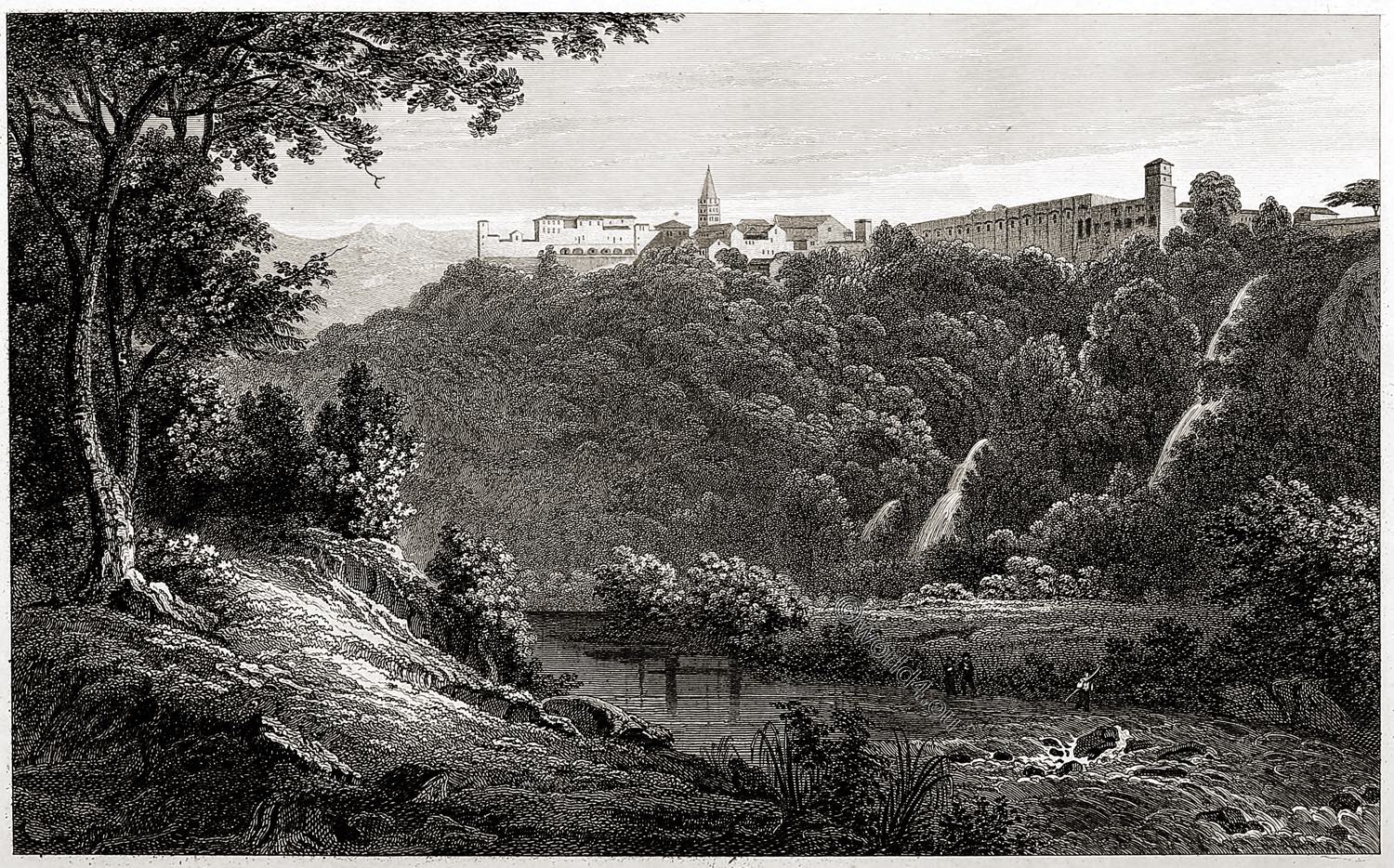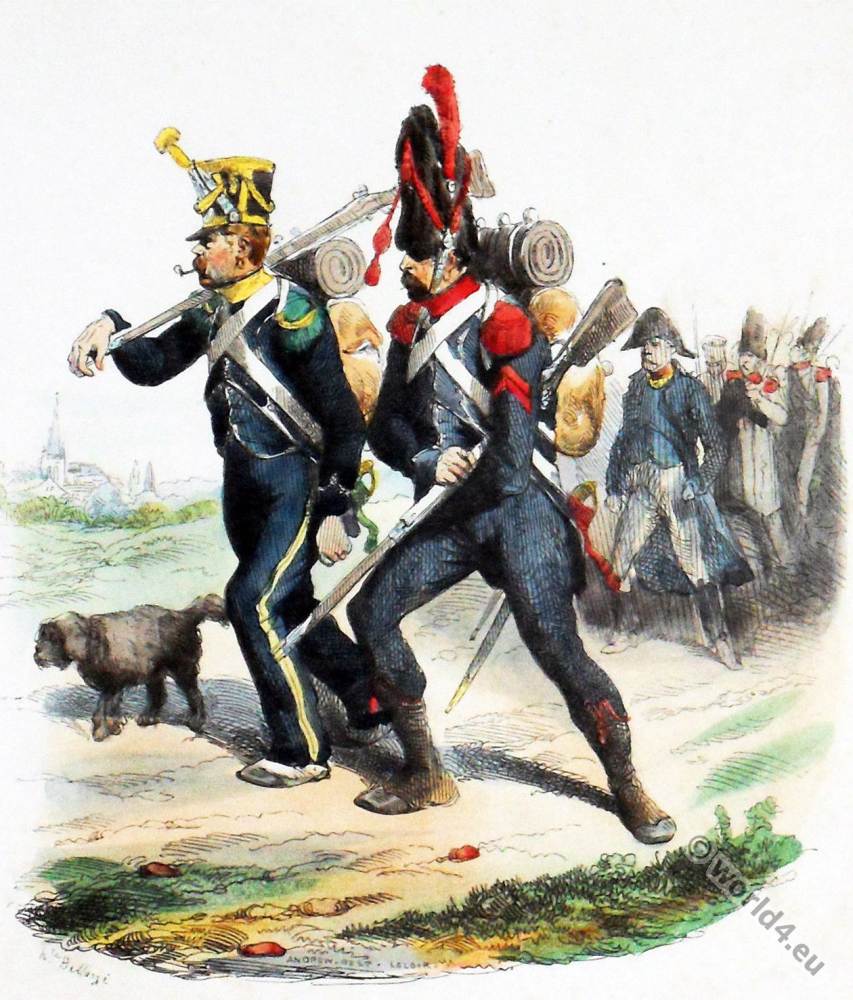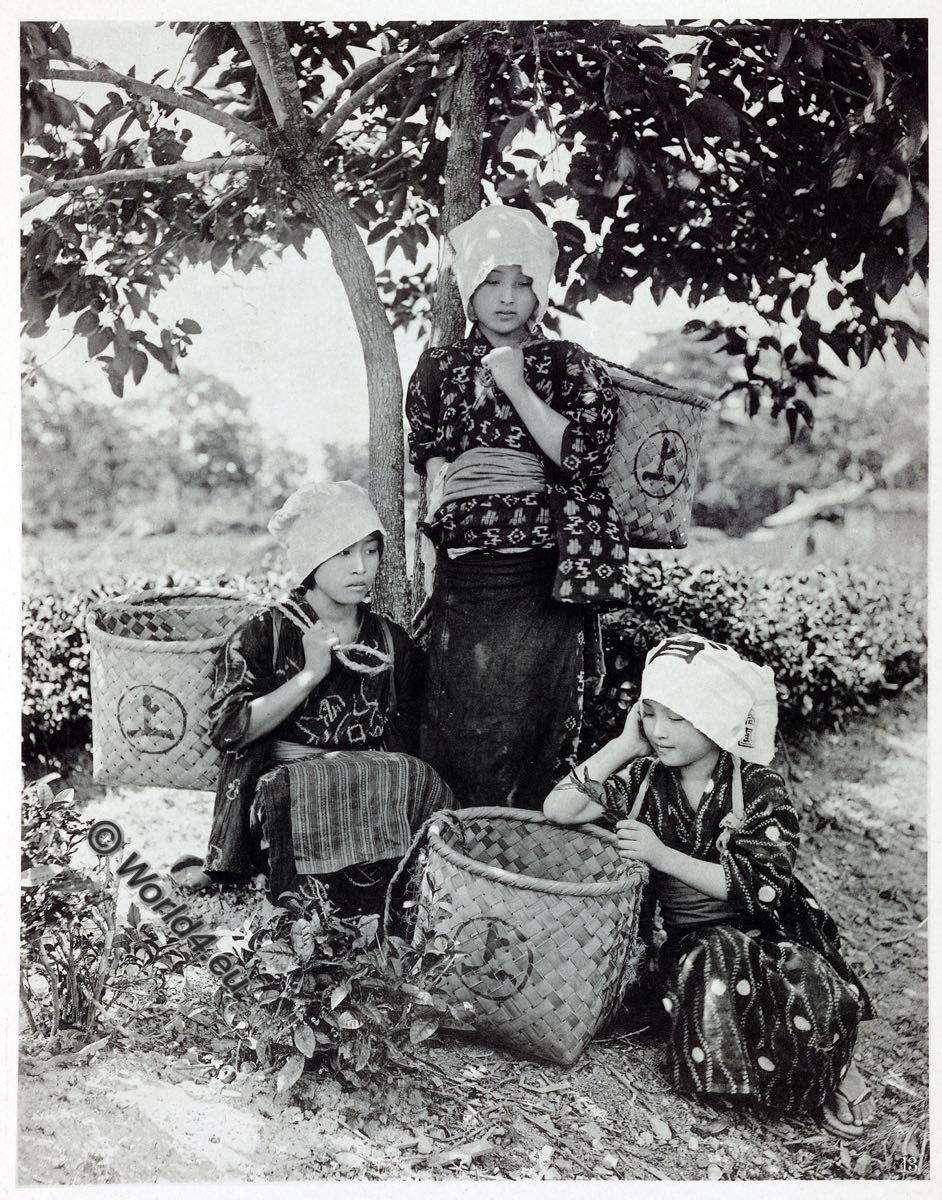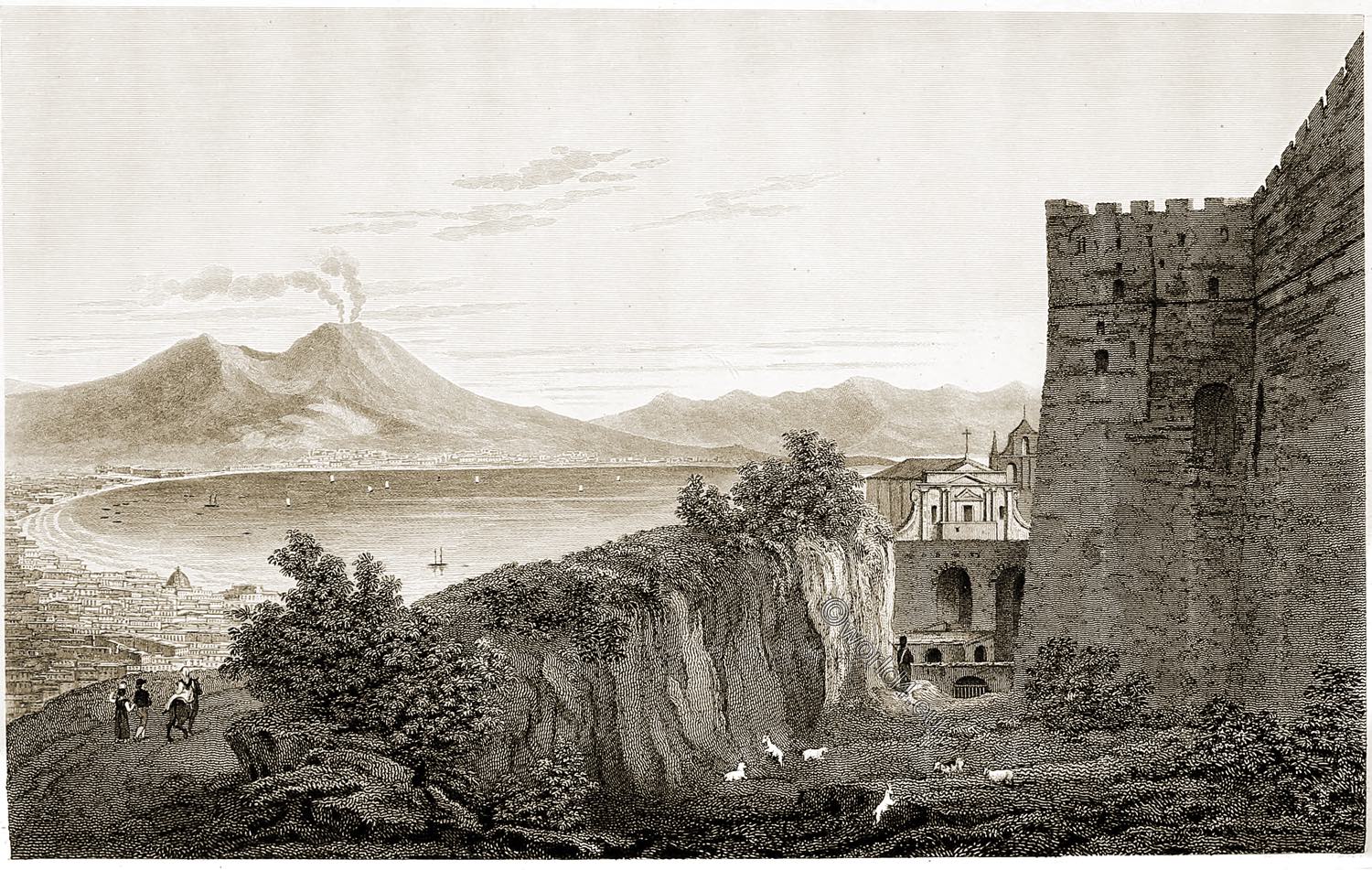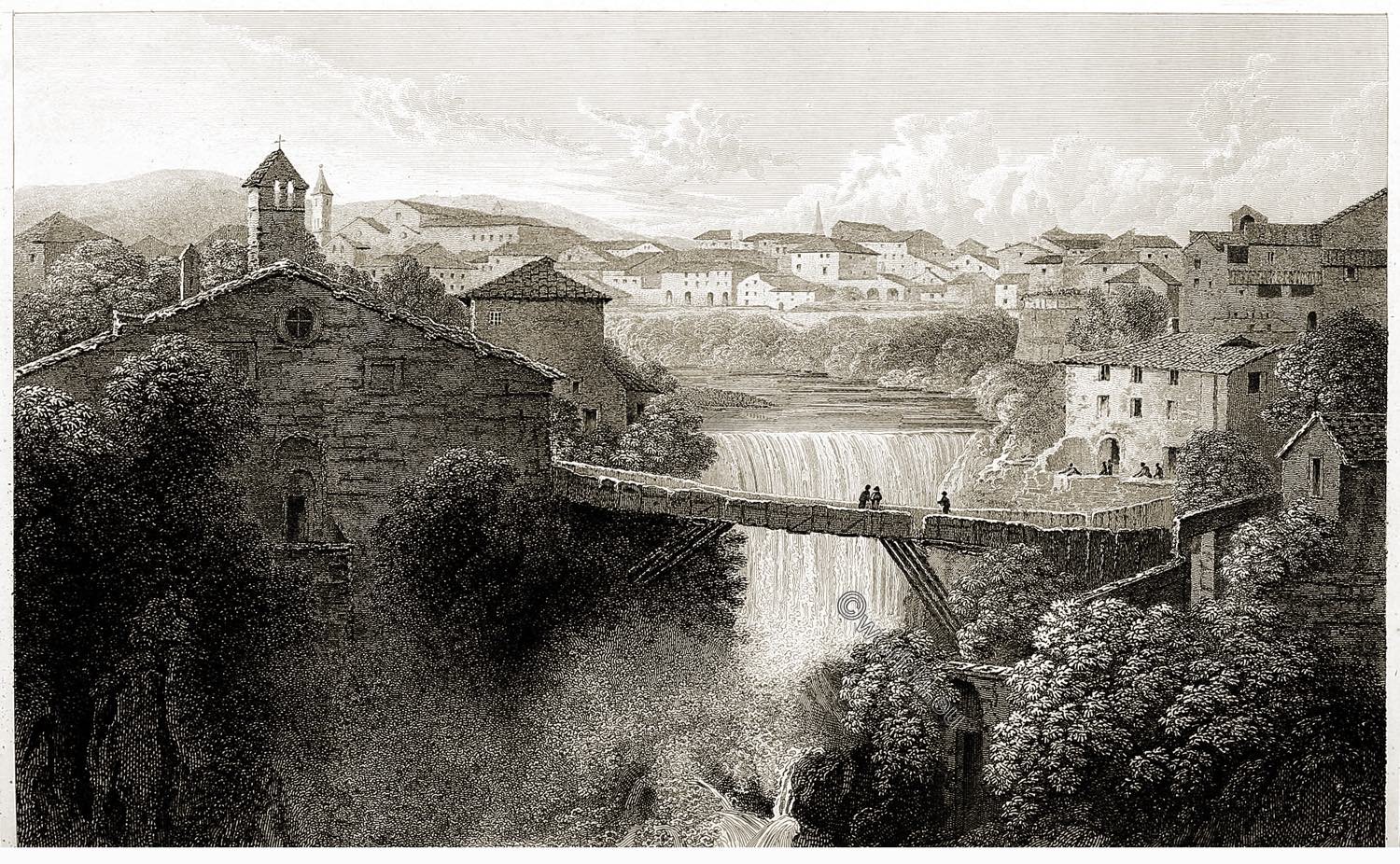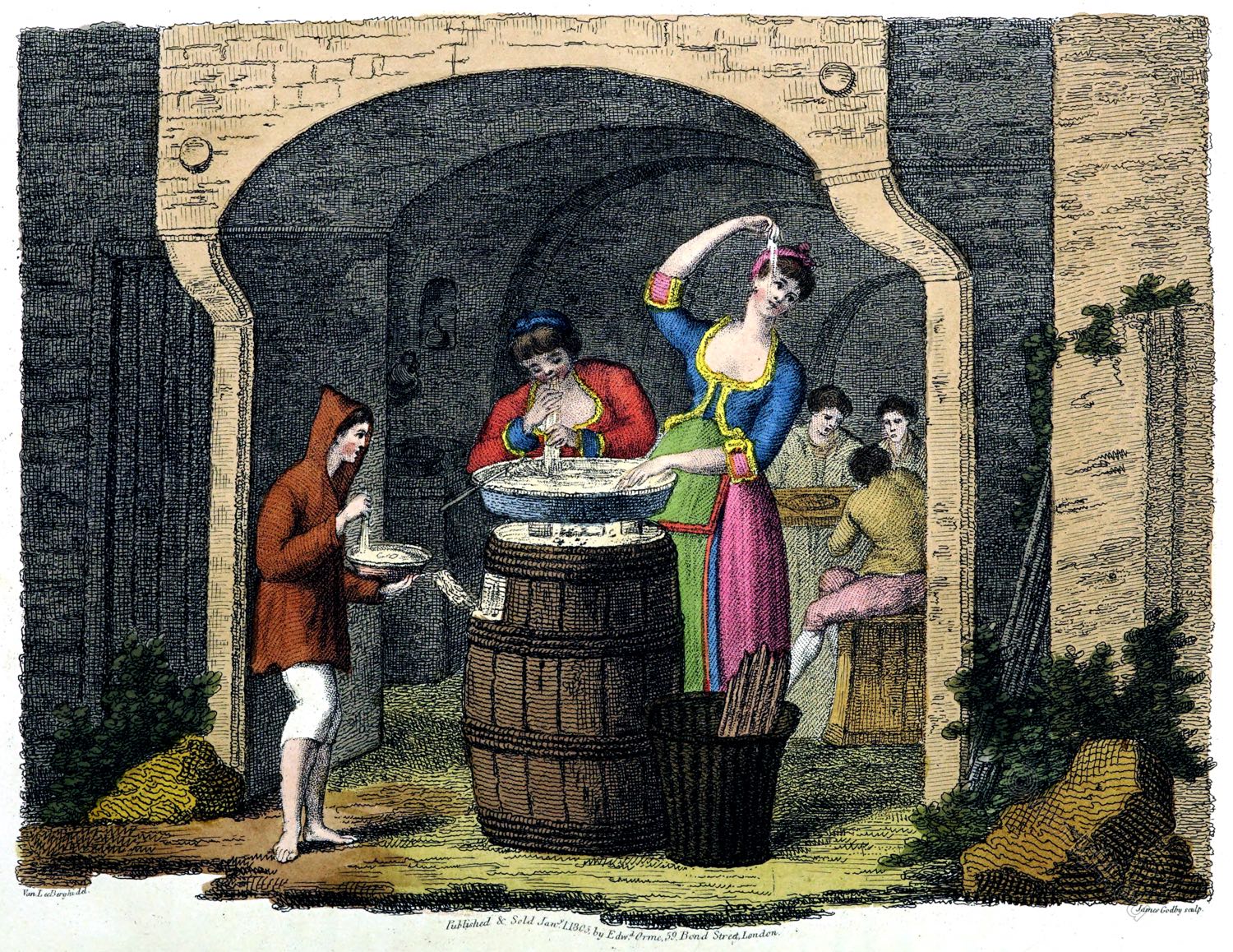
NEAPOLITANS EATING MACARONI. ITALIAN SCENERY, MANNERS, AND CUSTOMS.
NAPLES and Genoa are the principal places, that furnish Italy with macaroni and vermicelli. The Neapolitan macaroni is generally preferred, being made from a species of corn called saragolla, the grain of which is very hard, and the bread made of it of a reddish colour and glutinous. The genuine semolina is made from this corn. It grows in Apulia, in Termini, in Sicily, and in Livadia. It degenerates near Rome, and much more in the north of Italy.
The Neapolitan macaroni is easily known by not being twisted like that of Genoa, but straight, or bent only at one end; the reason of this is, that after having been forced out of the press to the usual length, it is cut off, and hung on a stick to dry. The hole of the pipe is very small, and this macaroni never breaks in cooking. It’s distinguishing character, however, arises from the quality of the grain, which is not to be found elsewhere, and which makes the paste appear reddish, granulous, and semitransparent, when held up to the light. If you break a piece the inside is shining, which is not the case with paste made of any other kind of corn.
The plate represents a country maccaronara; for so are called those public houses where nothing but macaroni is sold; and no village is without them. It is extremely curious to see a common cask converted into a stove, as here. One of the ends is knocked out, and the vessel filled lightly with stones; a hole is cut in the side of the cask for the purpose of admit¬ ting the air; the materials for a fire are then laid on the top, and a complete stove is formed.
The lower class of people in general eat the macaroni with their fingers, taking it out of the boiler with a wooden fork, and holding it high up with the right hand, in such a manner that the lower end just meets the mouth. Those who have not time to stay in the macccaronara, take off their red caps, and depressing the upper part of them, put in the macaroni; which having paid for, they walk on, and eat as they go : when they have finished, they put on the cap again. Grated cheese and salt are all the ingredients required to be added to the macaroni: Parmesan is the favorite, but the common people make use of a cheese made of mare’s milk, called cacio cavallo, which is very palatable.
Video Recipe: La Tipica Maccaronara dell’Irpinia – (The typical Maccaronara of Irpinia) Homemade pasta.
Illustration after P. van Lerberghi
Source: Italian scenery; representing the manners, customs, and amusements of the different states of Italy by James Godby. London 1806.
Related
Discover more from World4 Costume Culture History
Subscribe to get the latest posts sent to your email.

